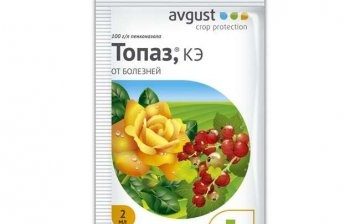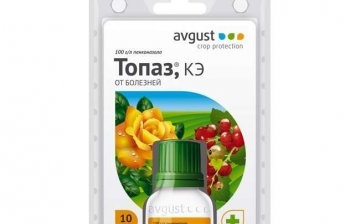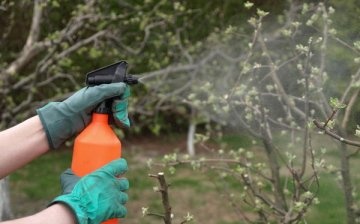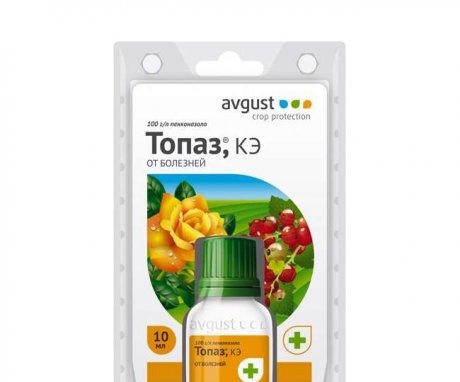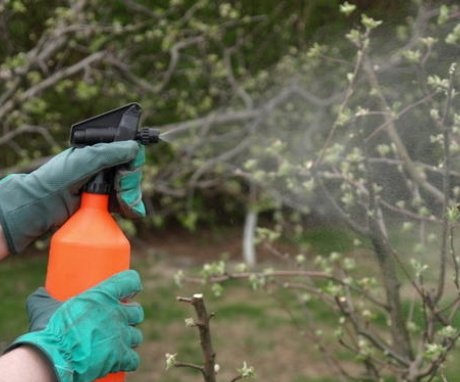Fungicide Topaz - effective fight against plant diseases
Cultivated plants need care. They can get sick and die from various fungi and unfavorable environmental conditions. For this purpose, a huge number of drugs for the treatment and prevention of plant diseases. One of these agents is Topaz fungicide, known for its protective properties.
Content:
Description and properties of the drug
Fungicide is a broad-spectrum drug that protects plants from many diseases (powdery mildew, rust, fruit rot, etc.). It is used for processing indoor plants, shrubs, vegetable crops.
The main active ingredient is penconazole. It is a moderately toxic substance (hazard class 3 for humans and animals), which suppresses the development of infection and increases the protective properties of the plant.
Many people consider pesticides to be dangerous chemicals, but if all the rules and safety measures are followed, they can help to preserve harvestwithout causing significant harm. Fungicide Topaz belongs to the 3rd hazard class, which means that it can be used in personal subsidiary plots. It is enough not to allow it to come into contact with the skin and mucous membranes.
The fungicide preparation Topaz is quickly absorbed and spreads throughout the plant, which ensures high efficiency.
It is convenient to use for processing garden plants because it is resistant to weather conditions. The main, disinfecting and antifungal effect is manifested in the first 3 days. Then the protective action begins when the fungicide has already spread over the plant.
This is a fairly effective, potent drug, but at the same time it does not have phytotoxicity. It does not harm the plants themselves, birds, beneficial insects. However, when using the drug, people need to use protective equipment. The fungicide can be mixed with other pesticides for maximum effectiveness. The shelf life of Topaz fungicide is 4 years. It is quite economical to use and has a long-lasting effect. It can be used for both prevention and treatment of fungal infections. The treatment will be especially effective if the plant is treated in the first 3 days after infection.
In what cases does it apply
Most often, the Topaz fungicide is used to treat fungal infections that so often affect cultivated plants and indoor flowers due to improper care or high humidity.
The drug blocks the development of infection and increases the protective functions of plants, it is effective against the following diseases:
- Oidium (or powdery mildew). This fungus usually affects grapes... Leaves affected by this ailment are distinguished by a faded color, uneven structure, they look as if they are dusty. In addition to the leaves, the fruits themselves are also affected, the bunches, which quickly collapse and fall off, never ripening. This can significantly reduce the yield. Affected bunches must be removed. They can no longer be eaten as they acquire the smell and taste of mold.
- Rust. Rust fungus most often affects flowers in flower beds and pots.A red bloom appears on their stems and leaves, which, upon closer examination, turns out to be an accumulation of fungal spores. The leaves begin to fall off, and the flower itself withers and dies. Like many other fungi, rust is caused by unregulated moisture. Treatment should be started before the entire plant is affected. The affected shoots will have to be removed and burned.
- American powdery mildew. This fungus is more commonly seen on bushes. gooseberry and currants... Leaves, shoots, berries - everything is covered with a white powdery bloom. The leaves begin to curl and then dry up and fall off. Anything that is affected must be removed and burned. Leaving infected, fallen berries and leaves will cause the fungus to return next year.
- Fruit rot. This is a disease familiar to many gardeners, when brown spots appear on apples and pears, which quickly increase. The fruits fall off and deteriorate. White concentric circles can be seen on the spots, which are clusters of fungal spores.
Features of the use of fungicide
The use of Topaz fungicide does not cause any difficulties. It is important to respect the proportions and not forget about the precautions:
- The drug is sold in ampoules. One ampoule must be diluted in a small amount of water, and then topped up with water to 10 liters. If indoor plants are processed, the ampoule is diluted in 5 liters of water.
- After that, the plants are completely treated with the solution. This should be done in calm weather so that part of the drug does not evaporate immediately. It is advisable that the day spraying precipitation was not expected.
- The solution is not stored. You need to use it within a day after preparation, you cannot leave it for future use, until the next spraying. The treatment of plants with the Topaz fungicide is carried out no more than once every two weeks (maximum - once every 10 days).
- Plants (fruit, shrubs) can be treated for prophylaxis. In this case, the first spraying is carried out in the spring before the start flowering, and the second - after flowering. For prevention purposes, 2-3 times will be enough.
- If we talk about vegetables and houseplants, then the fungicide is used only in case of the onset of the disease. The sooner treatment starts, the better. It should not be forgotten that all infected leaves must be removed, otherwise the fungicide will not give results.
- Berry bushes are processed only twice: when the buds have just begun to form and after harvest.
- Each disease may require an individual approach. With powdery mildew, 2 ml of the drug per 10 liters of water is enough, but rust will require a double dose (4 ml per 10 liters).
- It is possible to dose the preparation depending on the number of treated plants. This is done using a conventional medical syringe. For example, 1 or 2 ml of the drug is drawn from an ampoule into a syringe and dissolved in an appropriate proportion of the amount of water.
More information can be found in the video.



